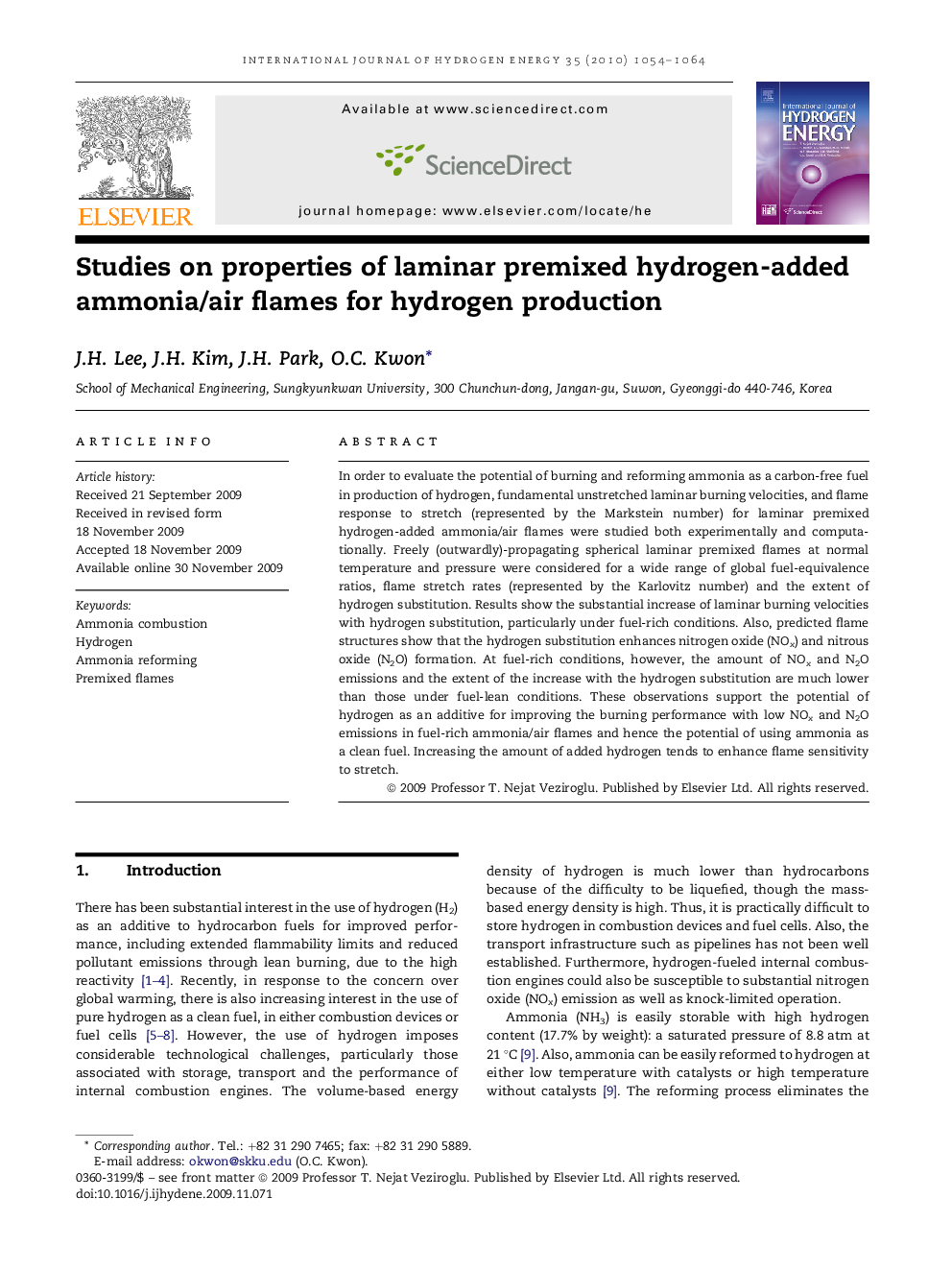| Article ID | Journal | Published Year | Pages | File Type |
|---|---|---|---|---|
| 1273497 | International Journal of Hydrogen Energy | 2010 | 11 Pages |
In order to evaluate the potential of burning and reforming ammonia as a carbon-free fuel in production of hydrogen, fundamental unstretched laminar burning velocities, and flame response to stretch (represented by the Markstein number) for laminar premixed hydrogen-added ammonia/air flames were studied both experimentally and computationally. Freely (outwardly)-propagating spherical laminar premixed flames at normal temperature and pressure were considered for a wide range of global fuel-equivalence ratios, flame stretch rates (represented by the Karlovitz number) and the extent of hydrogen substitution. Results show the substantial increase of laminar burning velocities with hydrogen substitution, particularly under fuel-rich conditions. Also, predicted flame structures show that the hydrogen substitution enhances nitrogen oxide (NOx) and nitrous oxide (N2O) formation. At fuel-rich conditions, however, the amount of NOx and N2O emissions and the extent of the increase with the hydrogen substitution are much lower than those under fuel-lean conditions. These observations support the potential of hydrogen as an additive for improving the burning performance with low NOx and N2O emissions in fuel-rich ammonia/air flames and hence the potential of using ammonia as a clean fuel. Increasing the amount of added hydrogen tends to enhance flame sensitivity to stretch.
